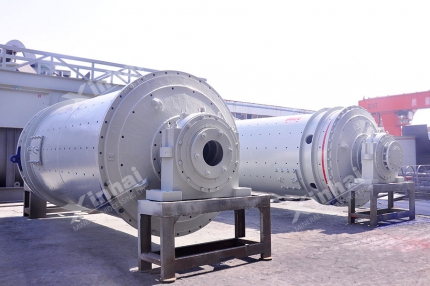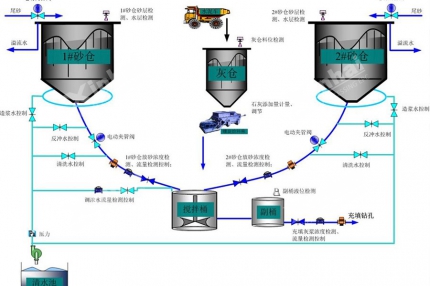Hematite (Fe2O3) is a kind of weak magnetic mineral, and its crystal belongs to the oxide mineral of hexagonal crystal system. The mineral form is dominated by iron oxide. According to its composition, hematite ore can be divided into four varieties, including ilmenite, aluminum hematite, magnesium hematite and hydrohematite.
Hematite ore has a wide distribution and involves many kinds of minerals. Therefore, the hematite ore separation methods are not single, mainly including the flotation process, magnetic separation process, gravity separation process and roasting magnetic separation process.
Use the table of contents below to navigate through the guide:
01Hematite flotation process
The flotation process is mainly used for the separation of fine and micro-fine weak magnetic hematite, including positive flotation process (positive flotation of anionic collector) and reverse flotation process (negative flotation of cationic collector). Commonly used collectors include tallow fatty acid (soap), vegetable fatty acid (soap), paraffin soap oxidated, acid chloride, oxidized kerosene, sodium petroleum sulfonate, corn starch, etc.
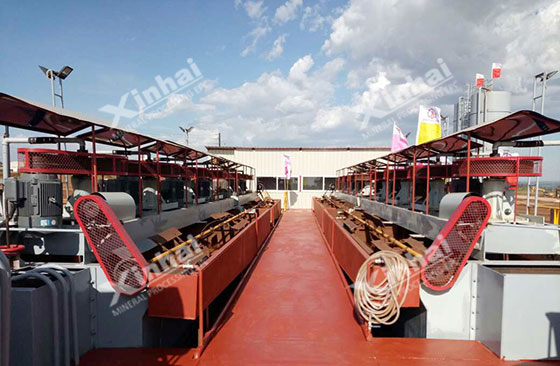
1. Positive flotation process
Hematite positive flotation process is a method of using anionic collectors to float iron ore from raw ore. It can achieve discarding tailings under the coarse particles without desliming.
Hematite positive flotation process is featured with simple dosage, low processing cost, which is especially suitable for a single hematite. However, the qualified hematite concentrate can only be obtained after many times of cleaning, and the foam is easy to be sticky, so the product is not easy to be concentrated and filtered.
2. Reverse flotation process
Hematite reverse flotation process is a method of using anionic or cationic collectors to float gangue minerals from raw ore.
Anionic collector reverse flotation process is mostly used when the pH value is 8-9. It is used to treat quartz-containing gangue minerals. After activated by calcium ions, collector of fatty acid is used to reverse flotation for obtaining hematite concentrate.
Cationic collector reverse flotation process usually adopts amine collector as the flotation reagent, which is suitable for the flotation of quartz gangue. Ether amine is the first choice as the amine collector, followed by the fatty amine. The inhibitor of iron ore uses the sodium silicate, tannin and sodium lignosulfonate, and their inhibitory effect is the best when the pH value is 8-9.
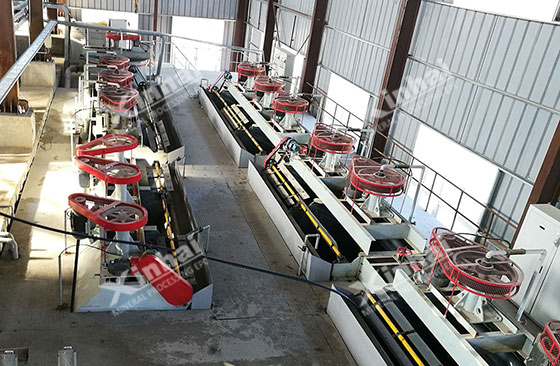
In terms of the ore properties of hematite ore, reverse flotation process is more advantageous than the positive flotation process. Because the collecting object of the reverse flotation process is gangue, while the collecting object of the positive flotation process is iron ore. Therefore, it is difficult to obtain high-quality hematite concentrate for gangue minerals with serious inclusions.
02Hematite magnetic separation process
Hematite magnetic separation process mostly adopts weak-strong magnetic separation process, which is used to treat magnetite-hematite mixed ore. Tailings of low-intensity magnetic separation are sent to strong magnetic roughing and scavenging after thickening, and the strong magnetic roughing concentrate is concentrated and selected by the strong magnetic separator after the thickening. The amount of strong magnetic minerals is easy to lead to the blockage of strong magnetic separator. So when the strong magnetic separation process is adopted, the weak magnetic separation operation is usually added before the strong magnetic separation operation to remove or separate the strong magnetic minerals in the ore.
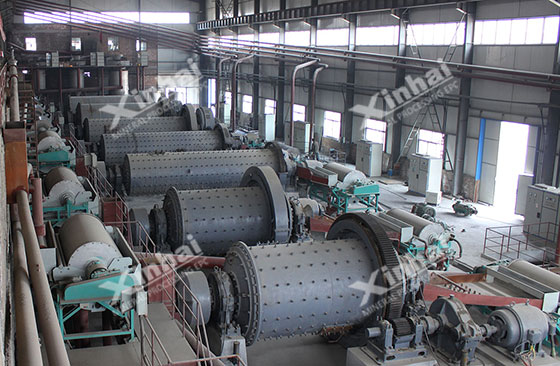
In addition, hematite magnetic separation process can also adopt the strong magnetic-flotation process. The monomer quartz and clay chlorite and other gangue minerals in the ore are discharged under the rough grinding condition by strong magnetic separation, and the rough magnetic separation concentrate is sent to the flotation process after the fine grinding for producing the qualified hematite concentrate.
03Hematite gravity separation process
Hematite gravity separation process mainly includes coarse grain gravity separation process and fine grain gravity separation process:
◆ Coarse grain gravity separation process is used to treat the deposit with high geological grade (about 50%), but the ore body with thin or multiple layers. For this kind of ore, only crushing without grinding can be adopted. In the case of coarser grain size, adopting the gravity separation process to discard the coarse tailings, so as to restore the geological grade.
◆ Fine grain gravity separation process is mostly used to treat hematite with fine grain size and high magnetic content. After crushing and grinding, the mineral is in monomer separation, and then fine and high-grade concentrate can be obtained by the gravity separation process.
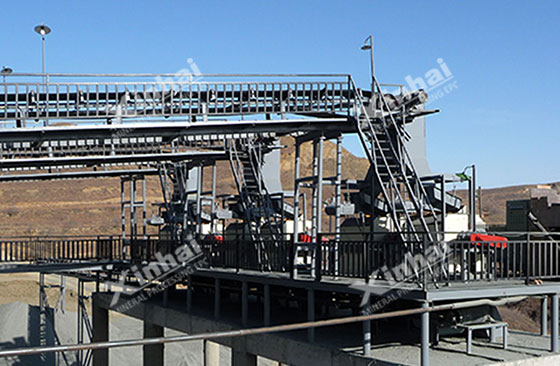
For most of the weak magnetic iron ore, the grade of strong magnetic concentrate is not high, and the unit processing capacity of the gravity separation process is low, so the combined process of strong magnetic separation-heavy separation is often used, that is, firstly adopting the strong magnetic separation process to discard a large number of unqualified tailings, and then using the gravity separation process to treat the strong magnetic concentrate, which can improve the concentrate grade.
04Hematite roasting magnetic separation process
When the mineral composition is complex and adopting other mineral processing methods are difficult to obtain a good separation index, the roasting magnetic separation process is often used to separate the hematite ore.
Roasting magnetic separation process means to carry on magnetizing roasting, so that the hematite or pseudomorphic hematite are transferred to magnetite, and then adopting the weak magnetic separator for separation.
In order to further improve the grade of hematite concentrate, fine screen used for regrinding and re-separation (which can improve the concentrate grade to more than 65%)- regrinding and reverse flotation process (which can improve the concentrate grade to 66%) is often adopted to treat the hematite concentrate separated by magnetic separation process.

The above mentioned are the common hematite ore dressing methods. It is recommended that customizing the most suitable process through the mineral processing test.
05Xinhai Mining – Classic hematite ore dressing project
China Shanxi hematite ore dressing project
Mineral processing test:
After collecting 50kg of ore samples on site, the customer trusted Xinhai mine research institute to carry out the mineral processing test. After the determination of the raw ore properties, Xinhai mine research institute concluded that the iron minerals in the hematite ore were mainly magnetite and hematite, the iron minerals distributed unevenly, and the gangue minerals were quartz.
Xinhai solution:
After the mineral processing test, Xinhai mine research institute made a series of explorations on the mineral processing conditions of this project. With the comprehensive analysis, it decided to adopt the stage grinding, gravity separation - magnetic separation - reverse flotation process. After one stage grinding, about 60% of coarse grain concentrate and tailings were obtained, and then the gravity separation process was used to timely separate qualified coarse grain concentrate and discard the coarse grain tailings, and the fine grain grade adopted strong magnetic separation - reverse flotation to discard tailings.
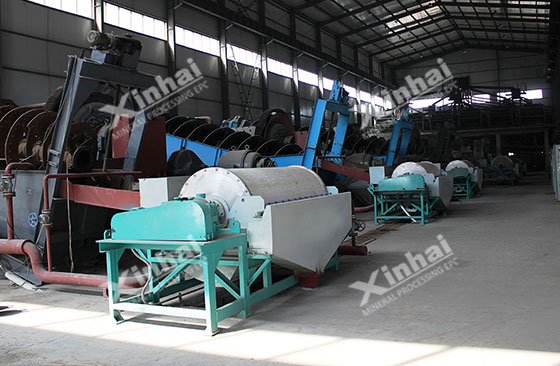
Mineral processing index:
The selected grade was 23.15%, the concentrate grade was 65.95% and the tailings grade was 10.05%, which greatly improveed the technical index of mineral processing. At the same time, the new mineral processing equipment and high-efficient mineral processing agents played a very good role, greatly promoting the progress of hematite ore processing technology, which was highly praised by the project customer.


 marketing@ytxinhai.com
marketing@ytxinhai.com  0086 13810327080
0086 13810327080 






































































































 CHAT
CHAT MESSAGE
MESSAGE





